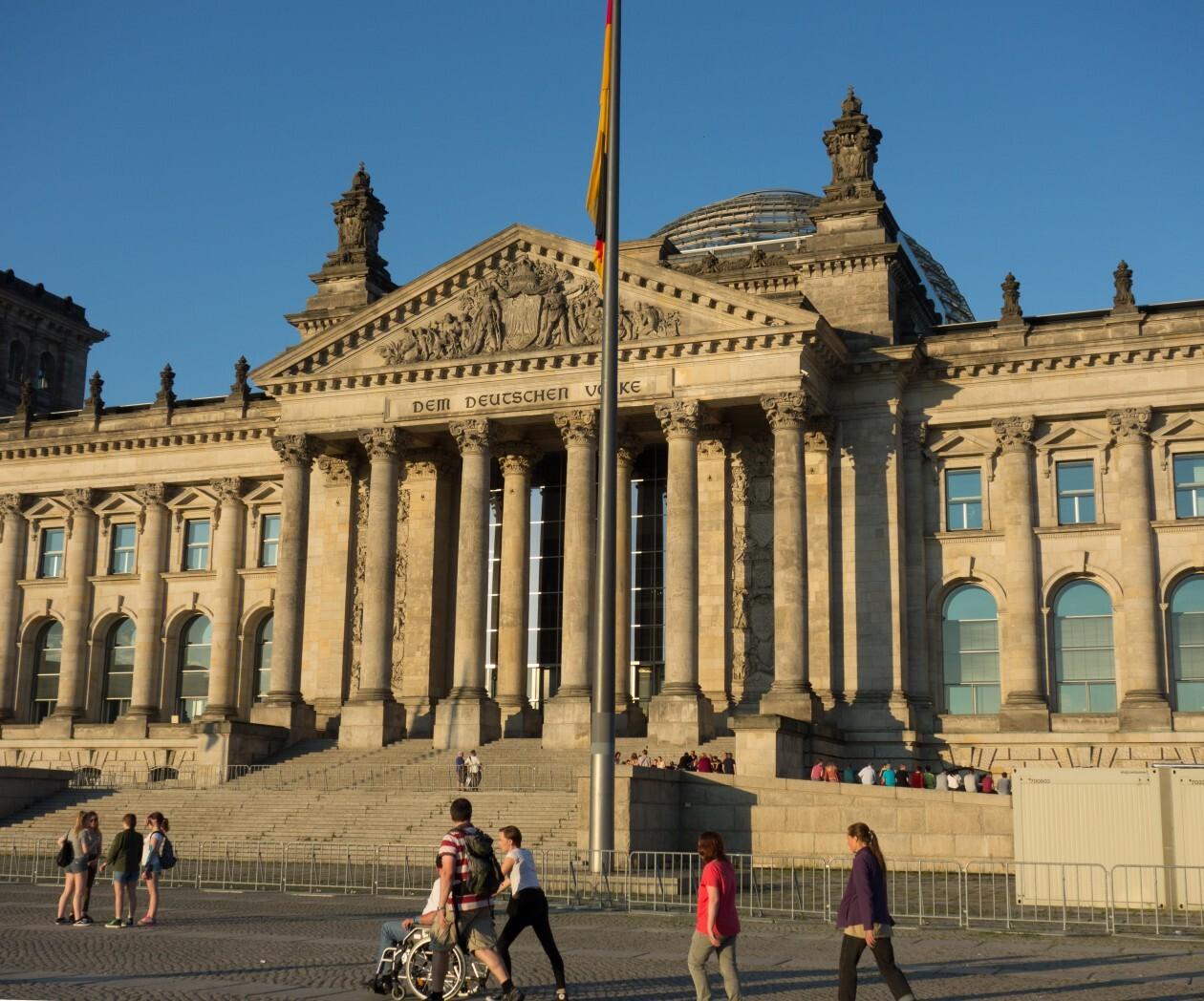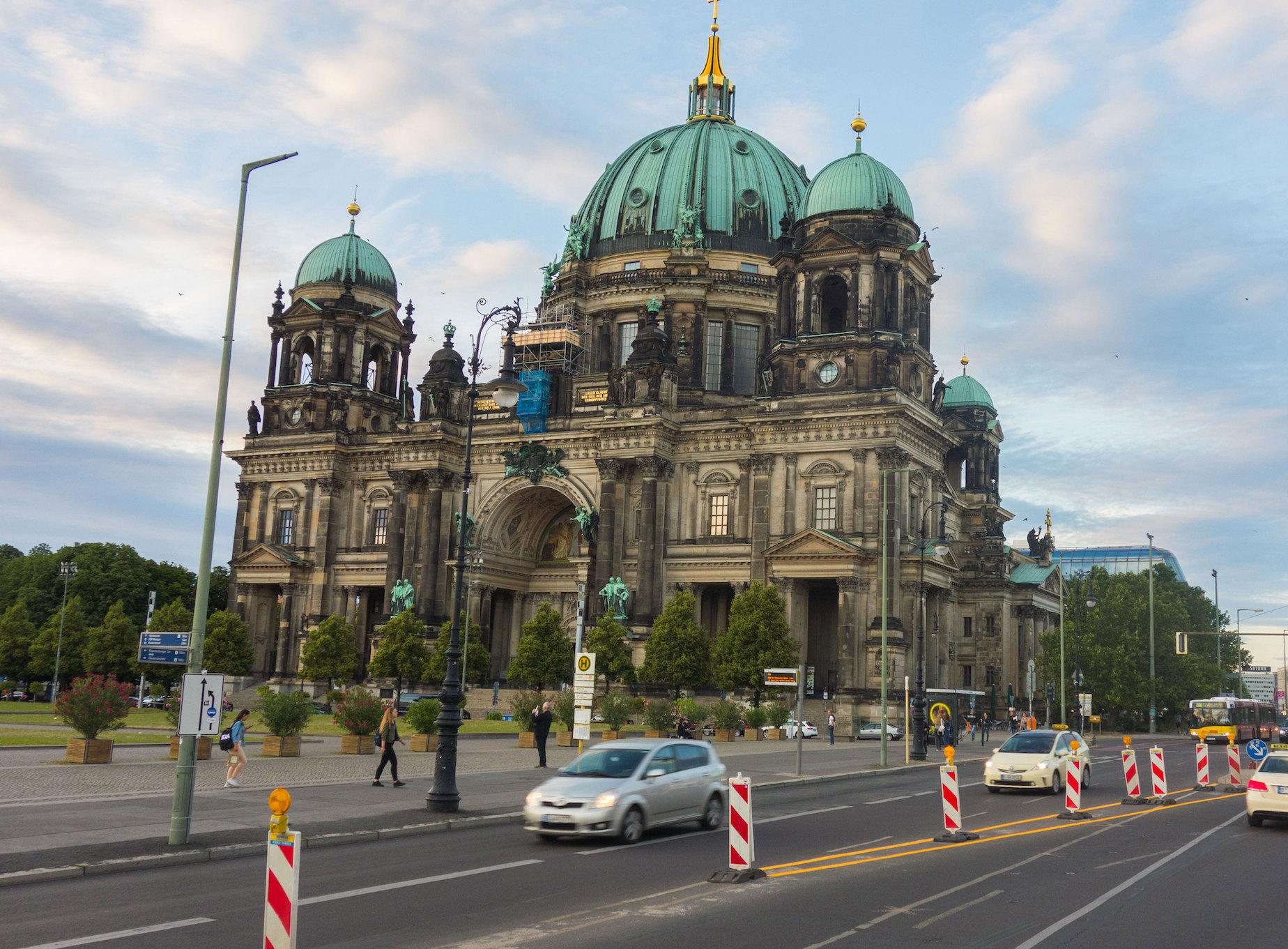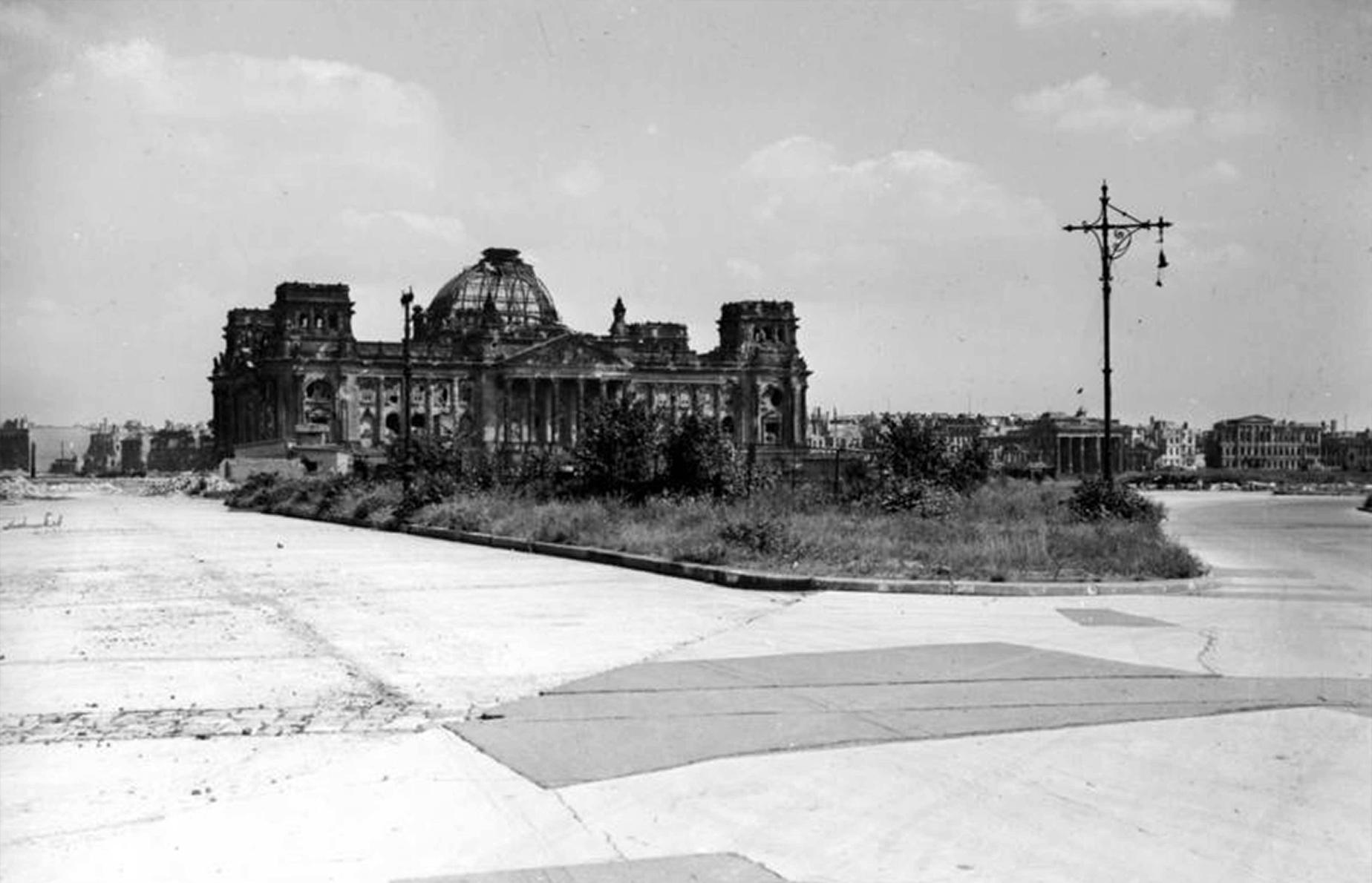Berlin now and then
Posted onOver the course of a few months, I have mapped and recreated several historical photographs of Berlin. From the Spartacist uprising to the fall of the wall, here is a first set of pictures that show Berlin as it was, and as it is.


Spartacist troops on guard near Cafe Astoria on Unter den Linden, shortly after the proclamation of the Weimar Republic. The Spartacists’ aims were to overthrow the current government and establish workers’ and soldiers’ councils in its place, if necessary by force. The government called the right-wing, anti-communist Freikorps to quell the uprising, resulting in a violent civil war in the streets of the capital.


Soviet soldiers photograph the ruins of the Reichstag on May 7, 1945. Behind them stands the battered Brandenburg gate. Five days earlier, the victorious Soviets flew their flag over the Reichstag, marking the end of the Battle of Berlin. General Zhukov would accept the unconditional surrender of Germany in Lichtenberg two days later, on May 9.
The IS-2 tank behind the soldiers belongs to the 7th Independent Guards Heavy Tank Brigade.


The Reichstag in ruins on June 3 1945, a month after its capture by the Soviets. The German parliament would not return to the Reichstag until its restoration was completed in 1999, 8 years after the reunification.


American armoured cars parade in front of the Victory Column on Charlottenburger Chaussee. General Patton is standing in the front car. Charlottenburger Chaussee was renamed to Straße des 17. Juni in 1953 to honour the uprising of East German workers. The first photo was taken by an American soldier in 1945. It was almost certainly taken during the victory parade on September 7, 1945.


This memorial to the 81 116 Soviet soldiers killed during the battle of Berlin was unveiled in 1945, merely a few months after the capture of the city. In the background, the ruins of the Reichstag are still visible. It belongs to the same set as the previous one, so it was likely taken in the autumn of 1945.


The Berliner Dom showing heavy damage from Allied air raids.


A Soviet soldier poses in the Lustgarten in front of the heavily damaged Berliner Dom. It was used by the Nazis as a parade ground during the war. Later, captured enemy guns and tanks were put on display there.
On the right is a captured British WW1-era tank that was on display there before Berlin became a front city. It has an interesting story of its own.


The ruins of the Reichstag in 1951. To the right, the Brandenburg gate and the battered buildings of Ebertstraße are still left untouched, six years after the war ended.


A group of children visit Pariser Platz and the Brandenburg gate in 1951. In the background, Tiergarten is barely recognisable. Its trees were felled to be used as firewood due to a coal shortage.


The freshly rebuilt Stalinallee (now Karl-Marx-Allee) in East Berlin. Stalinallee was a flagship project of the socialist reconstruction effort, as evidenced by its distinctly Soviet architecture.
During its construction, 300 workers on Stalinallee went on strike. This strike snowballed into what would become the 1953 East German workers’ uprising, a widespread protest against the East German government that was eventually quelled with tanks. The 17th of July is now a national holiday in Germany.
Before the wall was erected, Stalinallee was a popular shopping destination for East and West Berliners alike. Nowadays, the unkempt grass betrays the former luxury of the area, but one can still find quiet cafés and restaurants under the shade of the thick row of trees that lines the boulevard.


West Berliners peek through a hole in the Berlin wall after the opening of the East-West border. The fall of the wall is an iconic moment in the history of Berlin. It marked the beginning of the end for the authoritarian regime of East Germany, and the first step toward German reunification.
But wait, there’s more!
If you would like to read more about the history of Berlin, I have written a piece about the Berlin airlift that was published on Slow Travel Berlin. I also highly recommend Anthony Beevor’s book about the battle of Berlin.